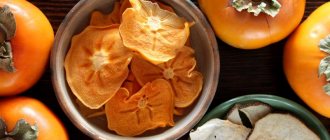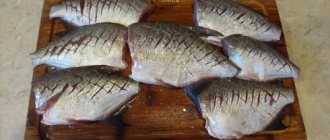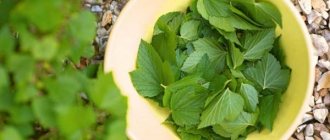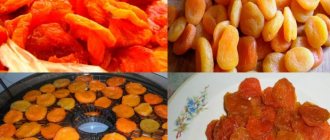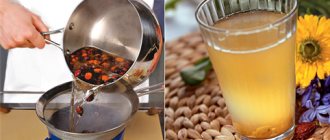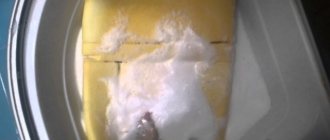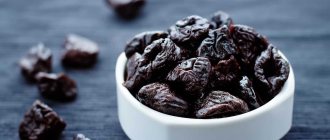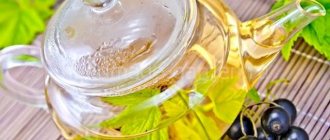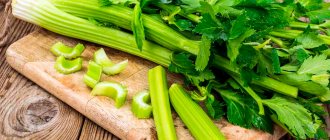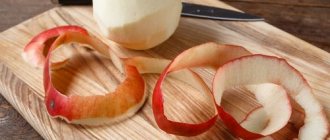Is it possible to dry basil?
Using fresh herbs year-round is a difficult task; purchasing them in winter is not always possible. In this case, the solution to the problem is to prepare dried herbs at home. Basil is dried in several ways. During the process, it is taken into account that the plant should not be exposed to direct sunlight - in this case, it will lose its entire supply of vitamin C.
Important! Basil should not be consumed by people with coronary heart disease, thrombophlebitis, hypertension, or those who have had a myocardial infarction.
Interesting Facts
- Dried crushed basil leaves are used not only when preparing hot meat dishes, sauces or pickles, but also in the production of alcoholic beverages.
- This herb destroys up to 90% of harmful bacteria in the mouth, including those that cause dental problems.
- In India, basil is the second sacred plant (the first is the lotus).
- Basil has repellent properties, which is why it was used in the mummification process in ancient Egypt.
- Translated, the name of the spice means “royal”.
- In salads and ready-made dishes, the grass must be torn, otherwise oxidation processes will begin in it and the leaves will quickly turn black.
Advantages and disadvantages of this harvesting method
A significant advantage of this method is that a properly dried plant retains its rich chemical composition:
- vitamins A, C, K, E;
- manganese;
- iron;
- zinc;
- copper;
- phosphorus;
- selenium;
- glycosides and saponins;
- essential oils;
- tannins;
- phytoncides and sugars.
Beneficial properties of dried basil:
- replenishment of missing vitamins during diets - strict diets lead to a deficiency of nutrients, and fresh or dried basil replenishes their deficiency;
- cleansing the body - the plant helps remove toxins from the body;
- antiseptic and anti-inflammatory properties - the plant alleviates influenza, improves the functioning of the gastrointestinal tract, soothes toothache and relieves inflammation of the larynx and genital organs.
- dried herbs stimulate brain function and calm the nervous system.
The disadvantages of drying are technical in nature:
- you will need special equipment - microwave, electric dryer, etc.;
- you will have to take care of the place where the greens will be stored before drying - it should be dry, dark and well-ventilated.
Selecting and preparing basil for drying
Leaves are used as raw materials, excluding sticks, since they are rough, or flowers - it depends on the taste preferences of the cook.
The collected raw materials are sorted and washed with running water. Wet herbs are not used for drying, so the basil is shaken off and then laid out on a towel or paper in one layer. In this form, the plants are left in a dry and dark place until all the moisture has evaporated.
Important! You cannot dry basil on newspaper, as printing ink is poisonous and is absorbed by the plant.
When to collect it for drying for the winter
Basil is cut during the summer before or during its flowering . At this moment, the flower contains the largest amount of microelements (zinc, copper, manganese, sodium) and aromatic substances, and the stems have not yet become coarser.
The harvest is harvested twice - in July and at the end of September. It is better to pick the leaves on a dry, sunny morning - at this time they are quite dry.
Important! Air circulation, shade and warmth are the most important conditions for proper drying.
Harvesting
The basil harvest should take place in mid-July or in the first half of August. It is worth doing in dry weather, when there is no dampness. To effectively preserve nutrients, it is recommended to cut when the flowers have not yet appeared, but the bush already has flower stalks. It is during this period of development that the maximum amount of essential oils is formed in the leaves. The leaves collected at this time will be the most fragrant. In this case, the shoots should not be plucked, but cut off with a sharp knife into 4 pairs of leaves. With this type of harvesting, the bush will quickly send out new shoots and produce a new harvest.
Collecting seeds
In order not to be late with the deadlines, it is recommended to regularly inspect the basil bushes - the inflorescences will signal that they are ready for harvest. No preliminary preparation is required - for the process you will only need garden shears and mittens (for those with delicate skin).
Step-by-step process for collecting seeds:
- Carefully examine the plant, identify large seeds.
- Use sharp scissors to cut off the inflorescence, be sure to grab part of the peduncle.
- Carefully fold the inflorescences - they will be tied into tight bunches.
How to collect seeds without loss?
Often, to separate planting material from the seeds, they do it simply - rub the dried inflorescences with their hands. It is not recommended to do this - there is a risk of damaging the skin and causing irritation. It is better to use thick linen bags, which will allow you to easily obtain seeds.
Place the dried testes in a bag and tie tightly. Perform threshing - gently tap the surface with a stick or hand for 5-10 minutes.
Pour the contents of the bag into a sieve with large mesh. It is better to blow outside in windy weather. First remove particles of testes by hand
Winnow carefully - the seeds are quite small
Using a sieve to separate the planting material from the seeds is another option for obtaining seeds. Be sure to make sure that the inflorescences are ripe and dry - this will make the work easier. Stock up on a pestle in advance for grinding plant materials - it is not recommended to carry out the process with your hands, so as not to injure the skin.
Use a pestle to gently crush the inflorescences in a sieve. Every 1-2 minutes remove debris and particles of testes
Complete the process with winnowing, which will clean the planting material.
After threshing, it is recommended to re-dry the planting material in a room with low humidity and high temperature. Use baking sheets or thick sheets of cardboard. 2-3 days are enough for drying. Be sure to stir the seeds; if damaged grains are found, remove them immediately.
Methods for drying basil
If there are no special devices, choose one of the natural drying methods.
Bunches
For drying, young branches with 8-12 leaves are cut in bunches. The stems are washed with water, dried and tied into bundles of no more than 7 pieces. - this way the plants will dry out faster.
The finished bundles are hung on a rope at a distance of 15-20 cm from each other in a dry, dark and well-ventilated place. A barn, attic, or balcony are suitable for this purpose. After 2-3 weeks, the basil will be ready.
Sheets
For this method you will need freshly cut basil leaves. Algorithm of actions:
- Wash the leaves and dry.
- Line a baking sheet with paper (you can use window screens instead).
- Place leaves in 1 layer.
- To protect the greens from dust and insects, cover the workpiece with a nylon net or gauze. Ordinary fabric cannot be used, since its dense structure will interfere with breathability, and then the basil will be blocked and become unusable.
- Place the pan in a dark and ventilated place.
- After 2 weeks, place the dry leaves in convenient containers, tightly close the lids and store them.
In crushed form
This method differs from the previous one in that all prepared raw materials are crushed, and an oven is used as an auxiliary device.
How to proceed:
- Wash and dry the basil.
- Chop the leaves, but not too finely.
- Line a baking tray with baking paper and place chopped plants on it in a thin layer.
- Preheat the oven to +40°C and place a baking tray.
- Dry the spice for 4-6 hours, and open the oven door every two hours, leaving a small gap for 20-30 minutes.
- After drying, allow the workpiece to cool, and then place it in convenient containers and store it.
Consequences of missing deadlines
Harvesting must be done at the right time. Every 2 weeks, the raikhon is picked so that it bushes. What happens if you miss deadlines?
- If you pick regan more than 2 weeks, the leaves will not have time to grow and stock up on vitamins. Don't leave basil without leaves.
- Carry out the pinching procedure less than 2 weeks - there will be a lot of inflorescences, the regan will not bush well. And you already know that you need to remove regan before the buds appear. Otherwise, the basil leaves will be tougher and more bitter and will lose their aroma.
Growing basil should bring maximum benefits. The more the rehan grows as a bush, the better the quality of the greenery. Therefore, do not allow flowering and collect regan so that it continues to bush. The key to the success of your harvest is regularity, attentiveness and accuracy.
Try not to miss the deadlines for assembling the basil.
How to air dry
When drying basil in the open air, consider the disadvantages of this method:
- humidity and ambient temperature affect the duration of drying - the process can take several days or weeks;
- Dirt and dust settle on the workpieces if they are not protected;
- in the open air, essential oils evaporate from herbs, which makes the aroma of the dried product weaker;
- When exposed to direct sunlight, the color of basil fades.
Dry the spice in the open air in any convenient way: in bunches or leaves. Optimal conditions are air temperature +22...+24°C, humidity 60-70% and no direct sunlight.
In the oven
Before drying the herbs, they are washed and dried. To do this, the leaves are laid out on a cotton towel to absorb moisture. The towel is changed as needed. After 3-4 hours, the drying procedure begins.
Algorithm of actions:
- Preheat the oven to +100°C.
- Place parchment paper on a baking sheet and a thin layer of basil leaves on top.
- Do not close the oven for 2 hours. The leaves will shrink several times, but their aroma will intensify.
In the microwave
The main advantage of drying in the microwave is that the desired result is obtained in a matter of minutes.
List of actions:
- Collect raw materials, wash and dry.
- Place a napkin on a plate.
- Place basil leaves on top in a single layer.
- Turn on the microwave at 600-800 W.
- Wait 3-4 minutes.
After this, the dried herb is sent for storage or immediately added to dishes.
In an electric dryer
To dry basil this way, follow the following algorithm:
- Wash the collected leaves, shake off, and leave to dry.
- Place the grass on a tray in one layer.
- Set the temperature to +35°C.
- Change pallets every hour.
Dried basil is ready in 4 hours.
How to store dry product at home
You can store it in crushed form and whole leaves. You can grind the herb in a coffee grinder or just with your hands. But experienced housewives prefer to store the spice whole and chop it before adding it to food. The shelf life of whole raw materials is longer; all beneficial properties will be preserved longer.
The best storage containers are glass or ceramic jars with tight-fitting lids. They should stand in a dark, dry place at room temperature.
- If you store fragrant herbs in fabric bags or paper bags, then oxygen will constantly interact with essential oils and the quality of the raw materials will deteriorate.
- Plastic containers and plastic bags are also not suitable for long-term storage; they can release chemical compounds.
- Dried basil should not be exposed to sunlight. If the storage jars are made of light glass, be sure to wrap them in dark paper, cloth or put them in a dark place.
- There is no need to place jars of herbs in a warm place (near the stove, stove) or in a place with high humidity (in the bathroom, next to the sink). Find them the driest, coolest place in the house.
Dried basil can be stored for a year. With proper storage, this period may increase, but its aroma and taste will be lost as it is stored. It is better to prepare enough spices to last until the next season.
Don't forget to label your weed jars. For example: “Basil, September 2019.” This will make it easier to keep track of how many months it has been stored. If you notice that lumps, mold, insects, or foreign odors have appeared in the raw material, it should be thrown away immediately.
How and where to apply
Basil pulp is used to make face and hair masks. Such products relieve inflammation, rejuvenate and tone the skin.
Dried basil is added as a seasoning to minced meat, sauces, hot and cold dishes. A universal spice that improves the taste of meat and fish. Dried herbs replace fresh herbs when canning and making marinades.
Some varieties exude a lemon aroma and are suitable for making tea. In folk medicine, this tea is used to treat diseases of the nervous system and increased fatigue. Decoctions are drunk for kidney diseases and respiratory diseases.
How to eat
Dried basil in crushed form is added to the finished dish, for example, to soup or salad. The seasoning is also used instead of pepper in the manufacture of sausages and smoked meat products.
Important! The spice is contraindicated for people with allergies, diabetes and cardiovascular diseases. Pregnant women consume it in limited quantities.
Instructions for properly harvesting leaves from a bush
How to properly cut basil so that it continues to grow? The sequence of actions is simple. If you truly love raykhon and want to provide yourself with spice for the whole year, then there will be no problems with the growth and preparation of raykhon.
So that it grows further and bushes
A growing Reyhan needs to be kept in good shape. When harvesting the first harvest, you need to start thinking about the second and third. How to properly cut basil:
- We find the top of the plant where young leaves appear.
- This place is cut off with scissors or pruning shears. The procedure can be done with your fingers if you are careful. The main condition is to cut, but not damage the stem where the leaves grow.
- Add fertilizer. For example, nitrogen fertilizer. This will help the regan grow faster and thicker.
- We feed regularly, that is, after each pinching session. We also make sure there is enough moisture in the soil. There should also be enough sunlight.
- We make sure that the basil harvest occurs before flowering begins. The buds can be removed so that they do not take away the strength of the plant, and the herb tastes juicier.
- It’s okay, basil flowers are also used for a variety of purposes. For example, in medical. Therefore, we boldly cut them off and give the opportunity to new shoots.
- Let's check - haven't you cut off too much? The growth point should remain intact. To carry out pruning, we are interested in the top of the bush, where the pairs of leaves are located. That is, the very top ones.
- After the first approach, we give the top the opportunity to grow and gain strength. At the moment when a new pair appears (about 10 days should pass), we prune again.
- We don't do the procedure too often. To collect, we select leaves growing on the side. Or those that are located near the stem itself.
- Do not cut the rayon too low, especially for the first time. You need to give the lower part of the bush a chance to grow.
- If the number of pairs at the top begins to double and the cut area sprouts again, then you are doing everything right.
- One of the benefits of pinching basil is that it saves space in your garden. Regan bushes, which means it produces more crops. Even one lush bush produces more than several poorly growing ones.
Great ! Now your herb is growing well, maintaining thick leaves and bushing. You are guaranteed a piquant taste and pleasant aroma of greens.
